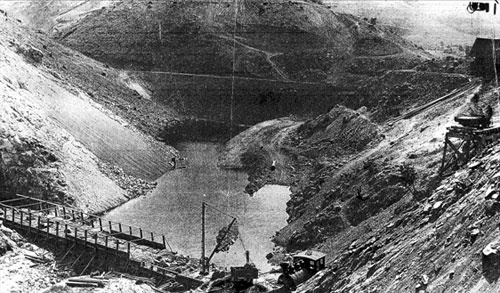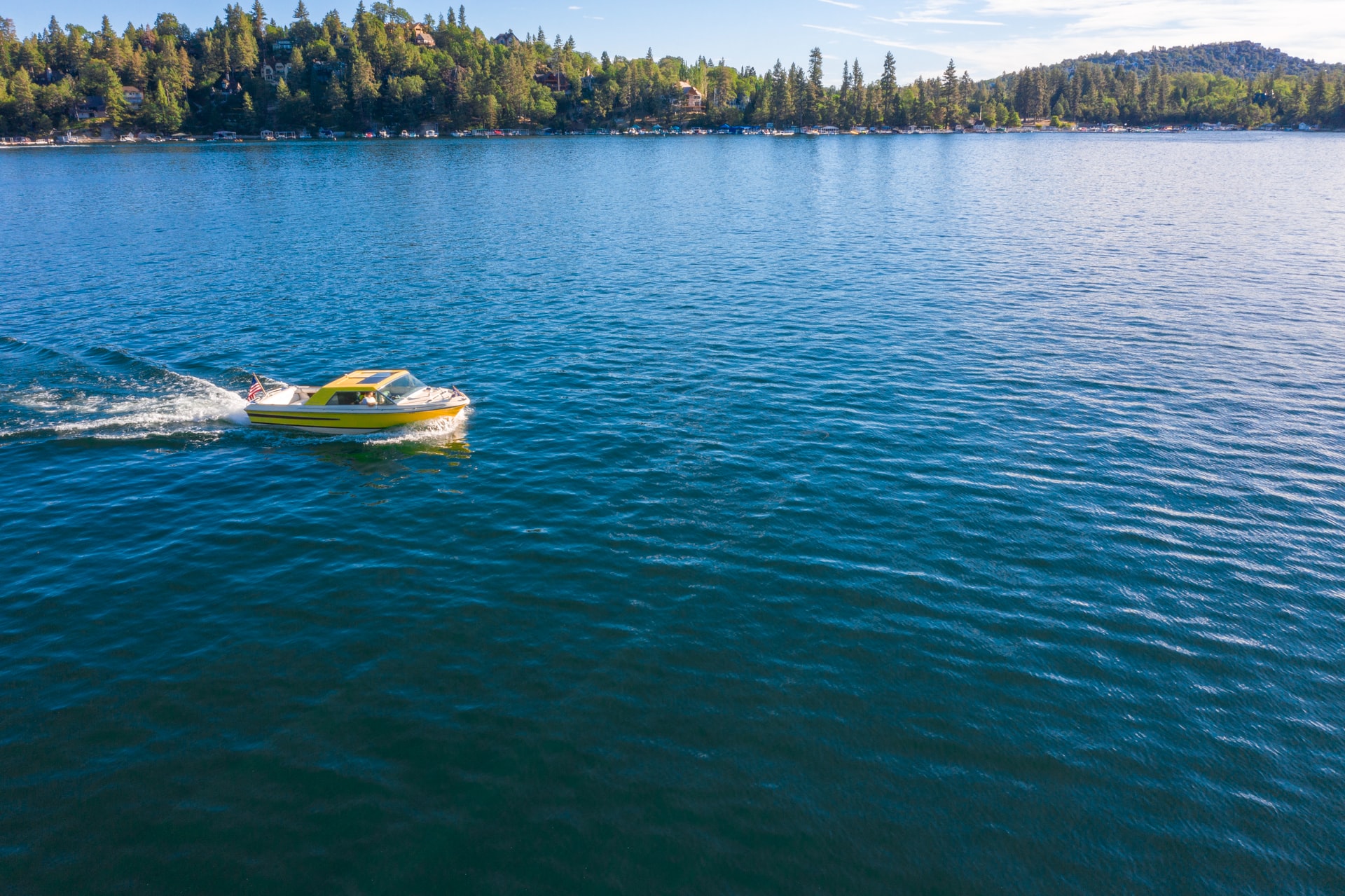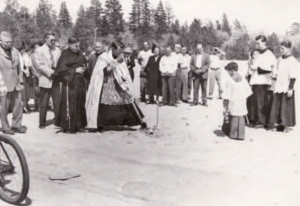Lake Arrowhead is a stunning haven tucked in the rugged San Bernardino mountain range. It contains neighborhoods, like the North Shore for example, which are great for travelers looking for a summer vacation rental or to visit the Lake Arrowhead hot springs, or even more popular running springs, throughout the area. Residents love their private homes, shopping down at Lake Arrowhead Village, and snow skiing during the winter months. But this gorgeous retreat doesn’t just boast beautiful greenery and a tranquil lake. Lake Arrowhead history, in general, is rich, unique, and fascinating as its present. Read on to learn more about how today’s Lake Arrowhead community came to be!
Home to the Paiute and Serrano Tribes
For hundreds of years, the lively and beautiful land we now know as Lake Arrowhead was home to the Native American nomadic tribes of the Paiute and Serrano.
Prior to European arrival to the continent, the Paiute homelands stretched over thirty million acres across the southwest. This Native American tribe lived in independent groups of three to five households that traveled across their territory according to the seasons. Each Paiute group was led by a council and a niave, known as a traditional leader who made suggestions and carried out the decisions of the council.
The Serrano tribe was named “serrano” by Spanish conquistadors, meaning “highlander” or “mountain people” for the tribe’s deep familiarity with their mountain homeland’s surrounding area. However, even today, the Serrano tribe refers to themselves as “Yuhaviatam” which means “people of the pines.” They lived in the cool, pine-laden San Bernardino Mountains during the summer and in the valleys during the winter.
The Serrano tribe spent generations mastering basket weaving, and for generations have made baskets from rushes, deergrass, and yucca fiber. The Serrano baskets were (and still are) constructed to be watertight and durable enough to be used for cooking.
For both the Serrano and Paiute tribes, the San Bernardino Valley containing Lake Arrowhead was a keystone of their culture, their survival, and their history. Even today, both the Serrano and Paiute tribes keep their traditions alive near their ancestral homes.
A Prosperous Settlement
In 1826, 24 years before California became a state, fur traders arrived in the Lake Arrowhead community. They paved the way for Mormon missionaries, bear hunters, loggers, and entrepreneurs to settle this rich land.
In 1850, Mormon settlers built a road from the mountains into the valley. This road was referred to as “The Mormon Road” and it facilitated trade and new settlements to expand into the valley. No settler, trader, or explorer who set foot in Little Bear Valley could deny the region’s natural beauty or the potential in its most plentiful resource—timber.
By the 1860s, the region we know as Lake Arrowhead was named Little Bear Valley, and it saw incredible growth. Little Bear Valley supported logging, lumber, and cattle raising. But lumber was in particularly high demand thanks to the burgeoning metropolis of Los Angeles.
From the mid to late 1800s, labor crews built a series of tunnels through the San Bernardino Mountains, connecting LA county with its supply of lumber. Los Angeles took shape thanks to the sturdy lumber grown in Little Bear Valley.
In 1891, a few businessmen from Ohio bought land in Little Bear Valley to build a reservoir and a dam and created the Arrowhead Reservoir Company—this project would become the foundation of Lake Arrowhead today.

Building Today’s Lake Arrowhead
The reservoir project began in 1893 and aimed to supply water to the dryer southern lowlands of California. Although, this proved to be easier said than done. Thanks to a number of problems, including engineering difficulties and supply transport issues, the Arrowhead Reservoir Company struggled to complete the reservoir.
The Completion of a Man-Made Lake
In 1905, almost 15 years after work had started, the property and nearly completed artificial lake was bought by a new corporation—the Arrowhead Reservoir and Power Company.
The Arrowhead Reservoir and Power Company thought to build a dam along with the reservoir to create a water-based power supply. But by 1921, twenty years after the project started, state legislation forced the Arrowhead Reservoir and Power company to halt their work.
Three decades after its inception, the project was abandoned—but the dam was complete and the lake was still there, filling with water.
The Start of a Hollywood Hotspot
The Arrowhead Lake Company, a Los Angeles syndicate that included J.V. Van Nuys and John O’Melveny, bought Little Bear Valley along with the surrounding area. They changed the name to Lake Arrowhead and Lake Arrowhead Woods and transformed this former logging town into a paradise for Hollywood stars. They built a 9-hole golf course and a stunning resort worthy of Clark Gable, a frequent visitor of Lake Arrowhead.
But movie stars weren’t always relaxing at Lake Arrowhead—some were there to work. Many famous films have taken place in this gorgeous Southern California gem. In the 1930s, Lake Arrowhead became the backdrop for the classic Shirley Temple film, classic Heidi. For decades, directors chose Lake Arrowhead’s incredible scenery for famous films:
- Magnificent Obsession
- The American President
- Space Jam
- The Parent Trap
Refuge for Servicemen
From the 1920s to the 1940s, tourism in Lake Arrowhead boomed. But during World War II, Lake Arrowhead became a different kind of restorative haven. In the 1940s, Lake Arrowhead Village became a sanctuary for servicemen. Soldiers and officers could relax on the lake’s tranquil waters or take in the awe-inspiring San Bernardino mountains.
Today’s Lake Arrowhead
From its logging origins to its star-studded past, Lake Arrowhead and the San Bernardino Valley boast a rich and unique history. Today, Lake Arrowhead continues to flourish as a sanctuary of natural beauty in Southern California. Many people reside in, own vacation homes, or visit this lakeside land to awe in all the beauty that this man-made lake has to offer.
Image Sources:




Keep up the excellent work, I read few articles on this site and I believe that your weblog is very interesting and has got lots of great info. Jaime Kevan Tarrant